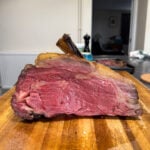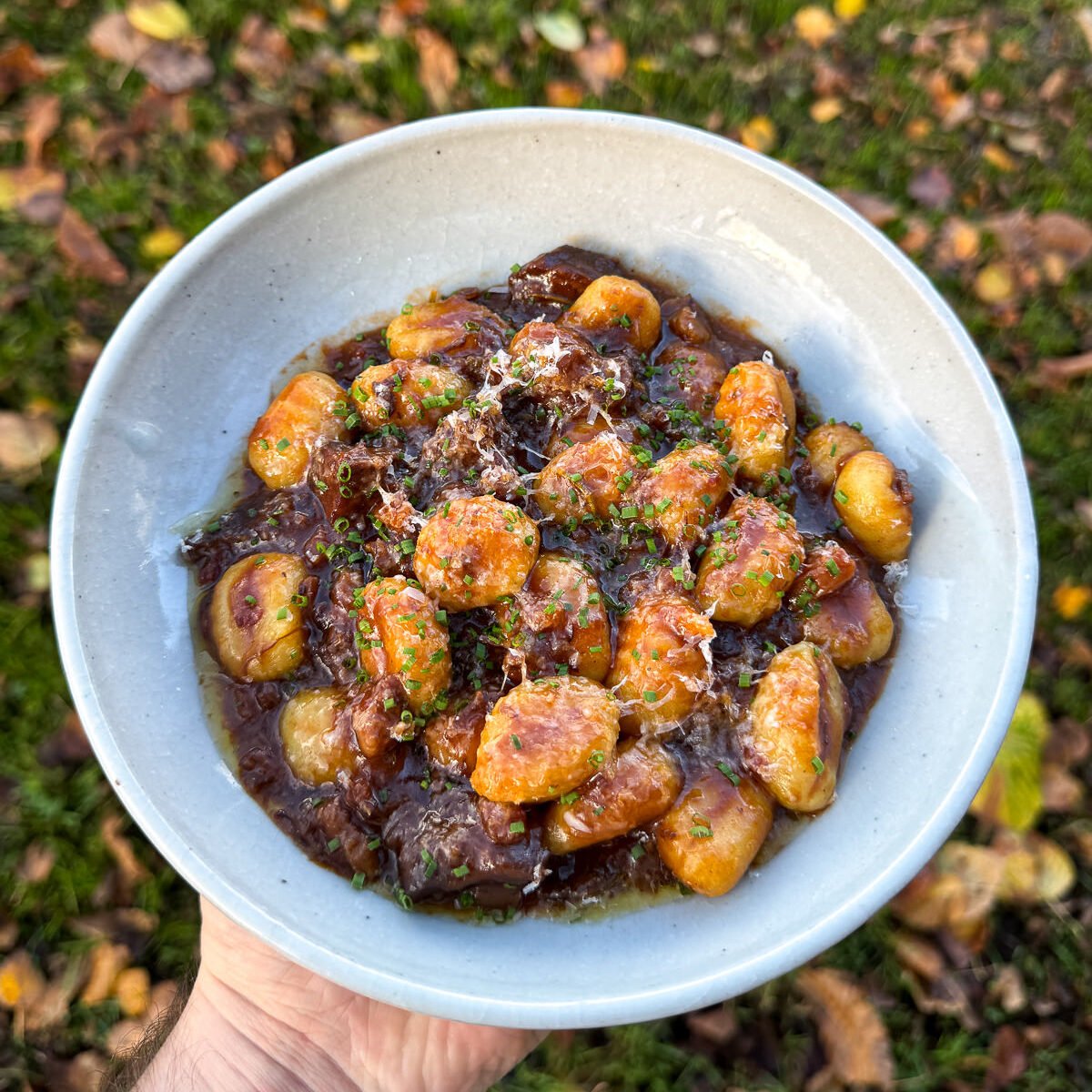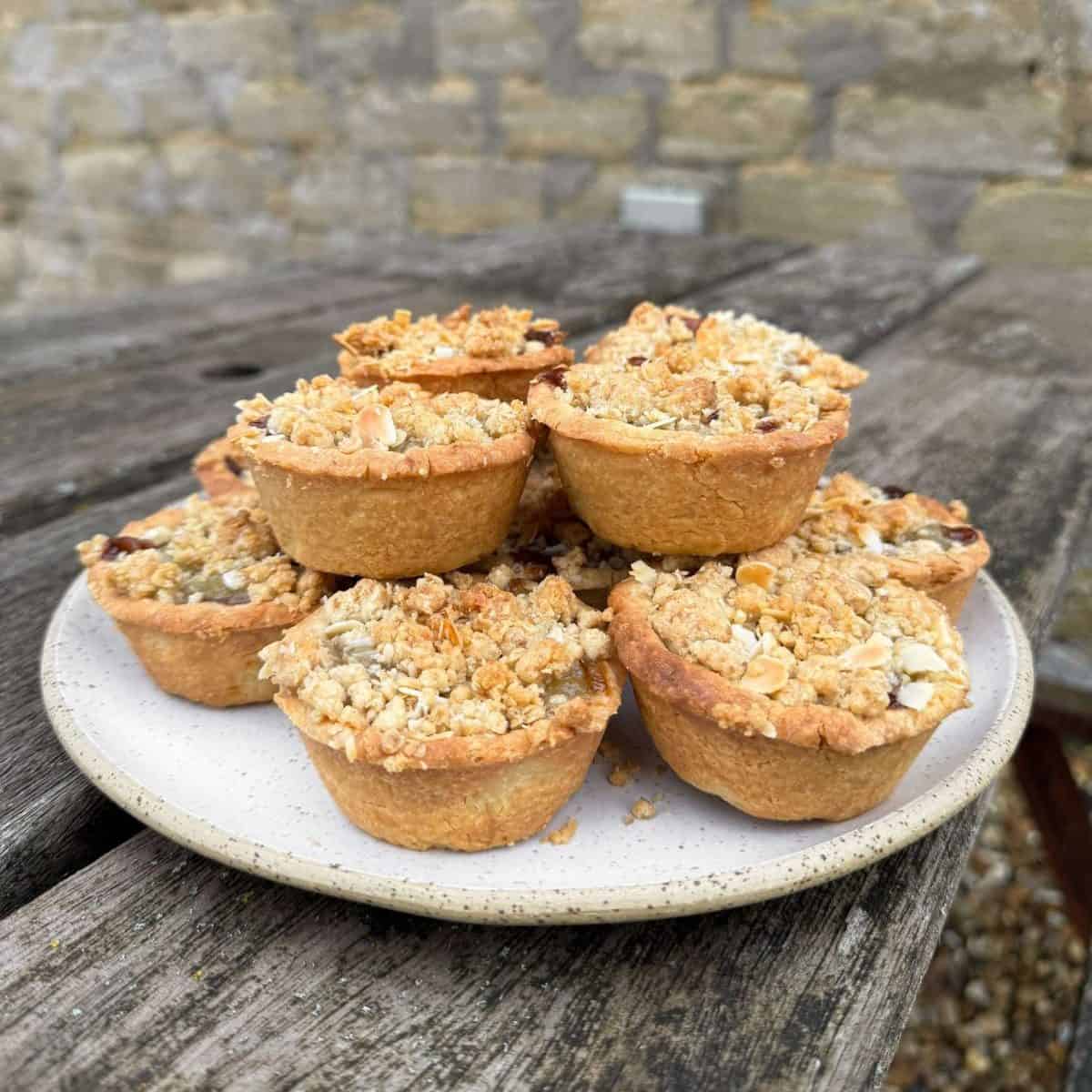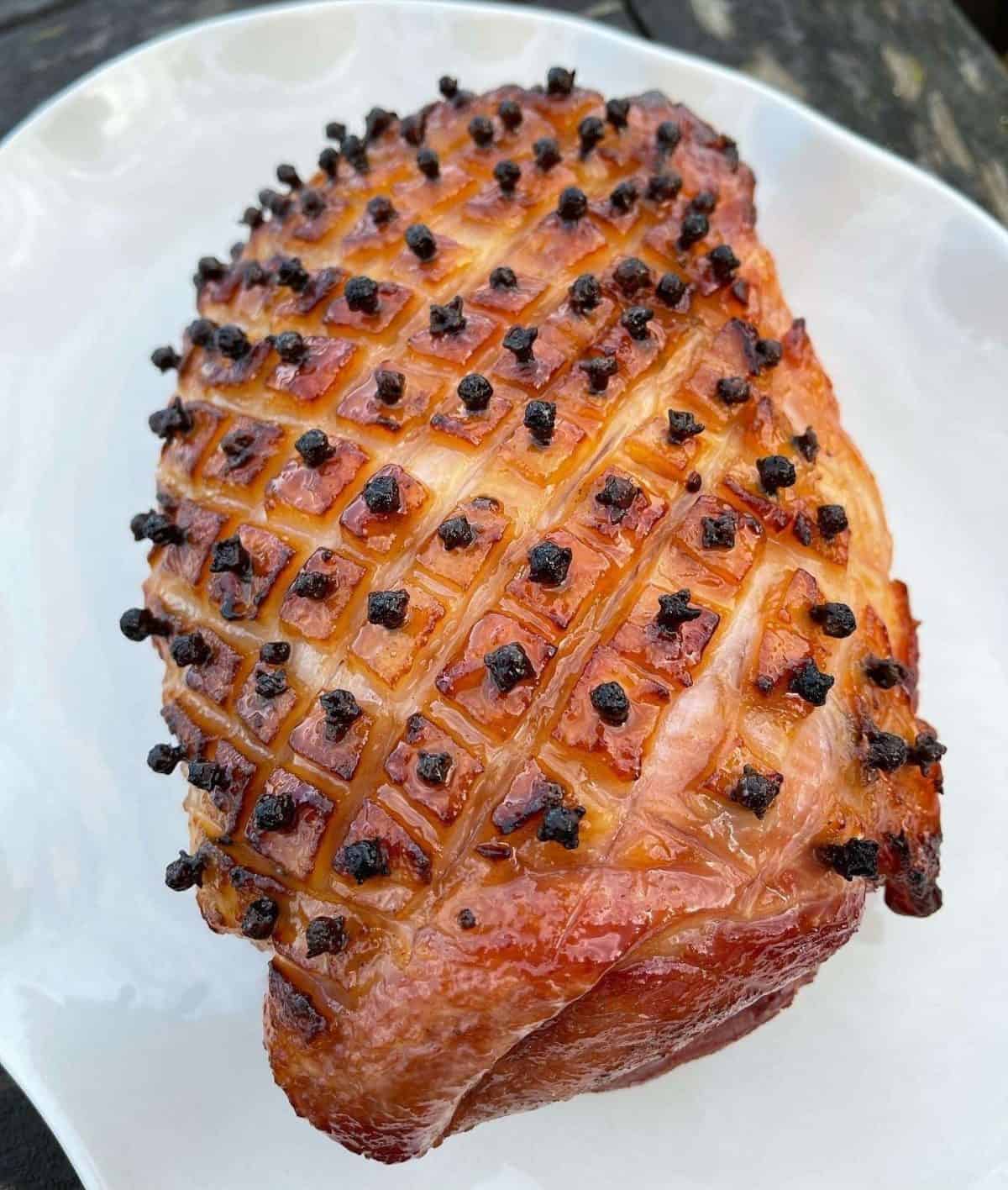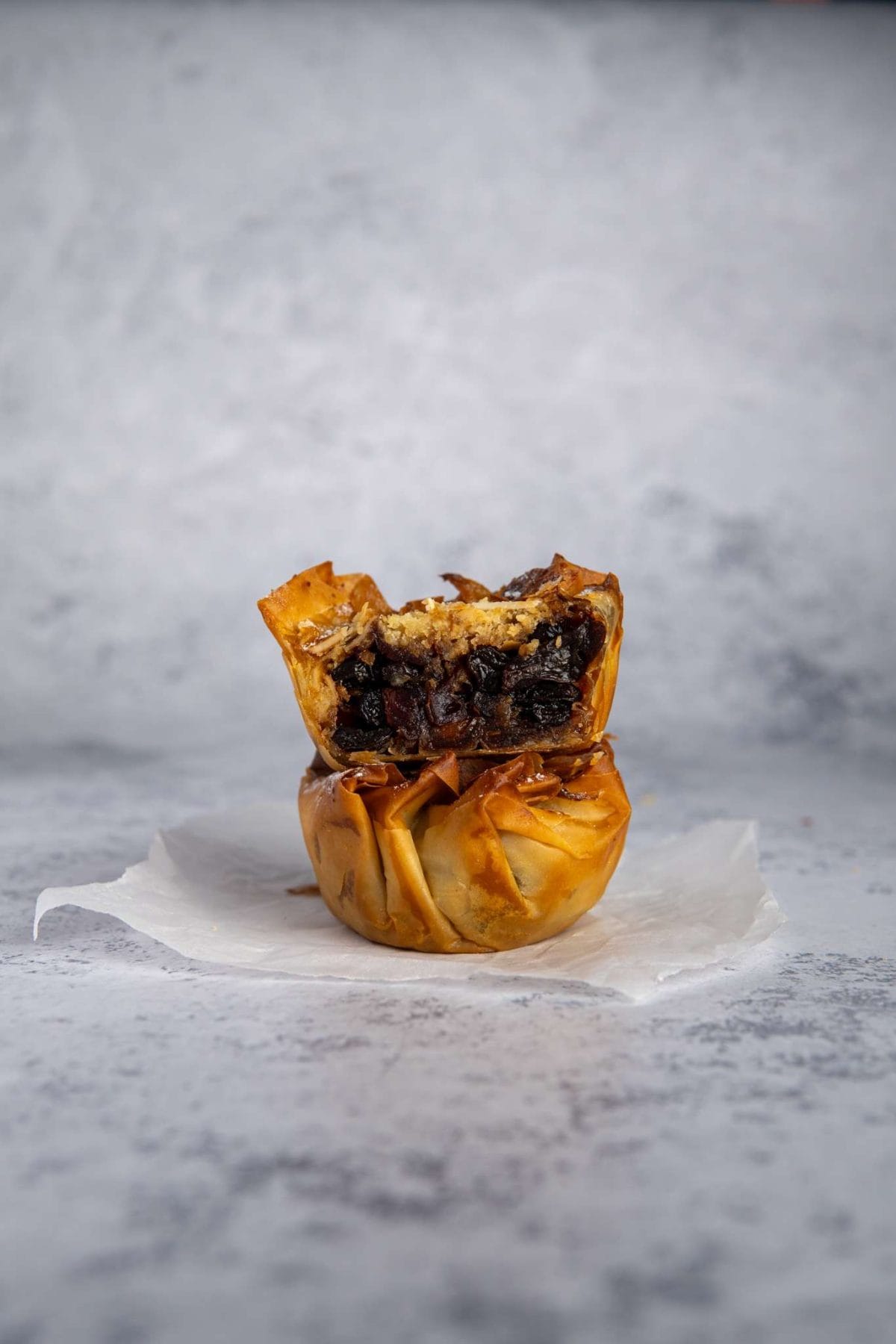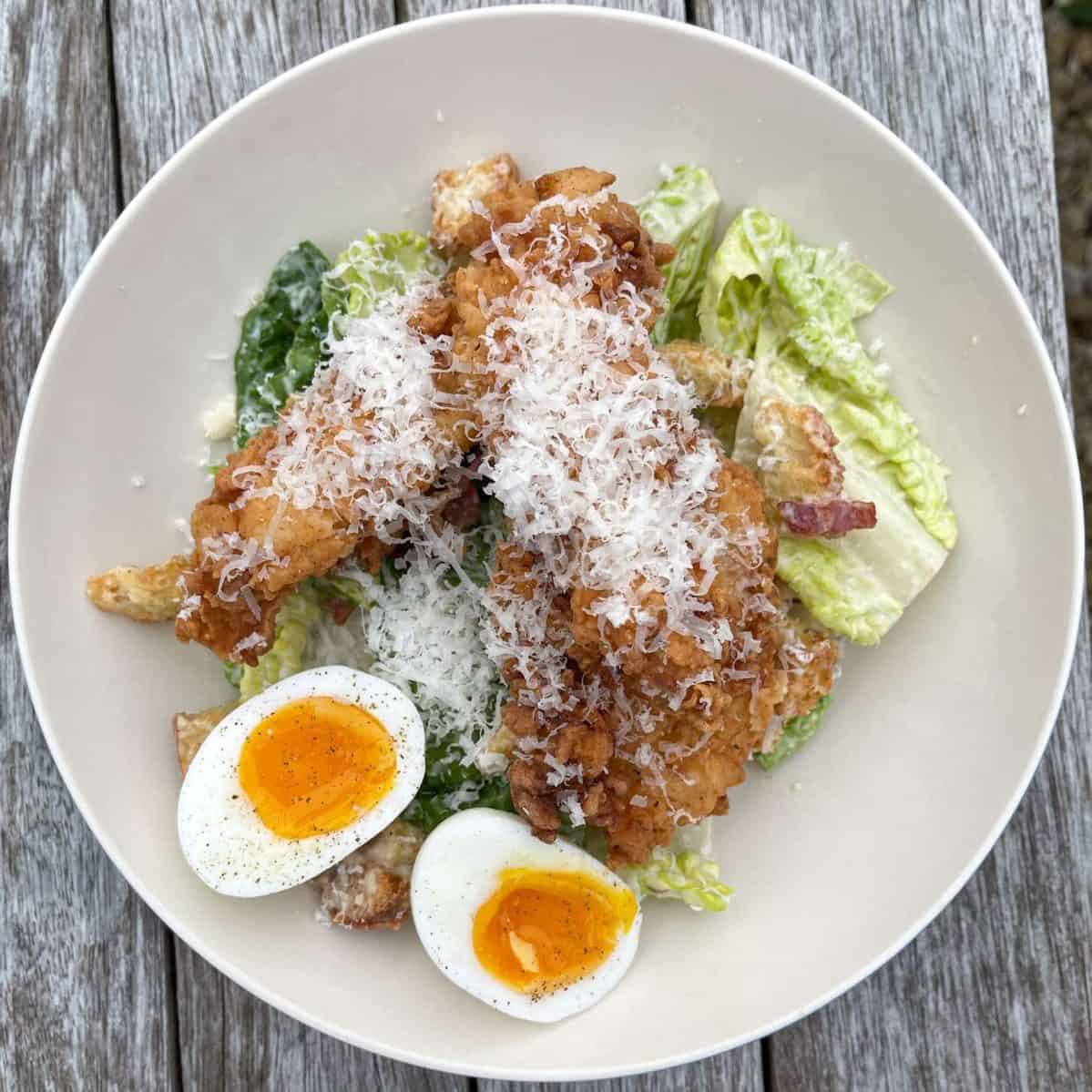Slow Roasted Prime Rib (Reverse Seared)
Here’s how to reverse sear a prime rib roast that’s melt in your mouth tender & pink from edge to edge! This is an easy yet impressive centre piece to serve at Thanksgiving & Christmas.
This post contains affiliate links.
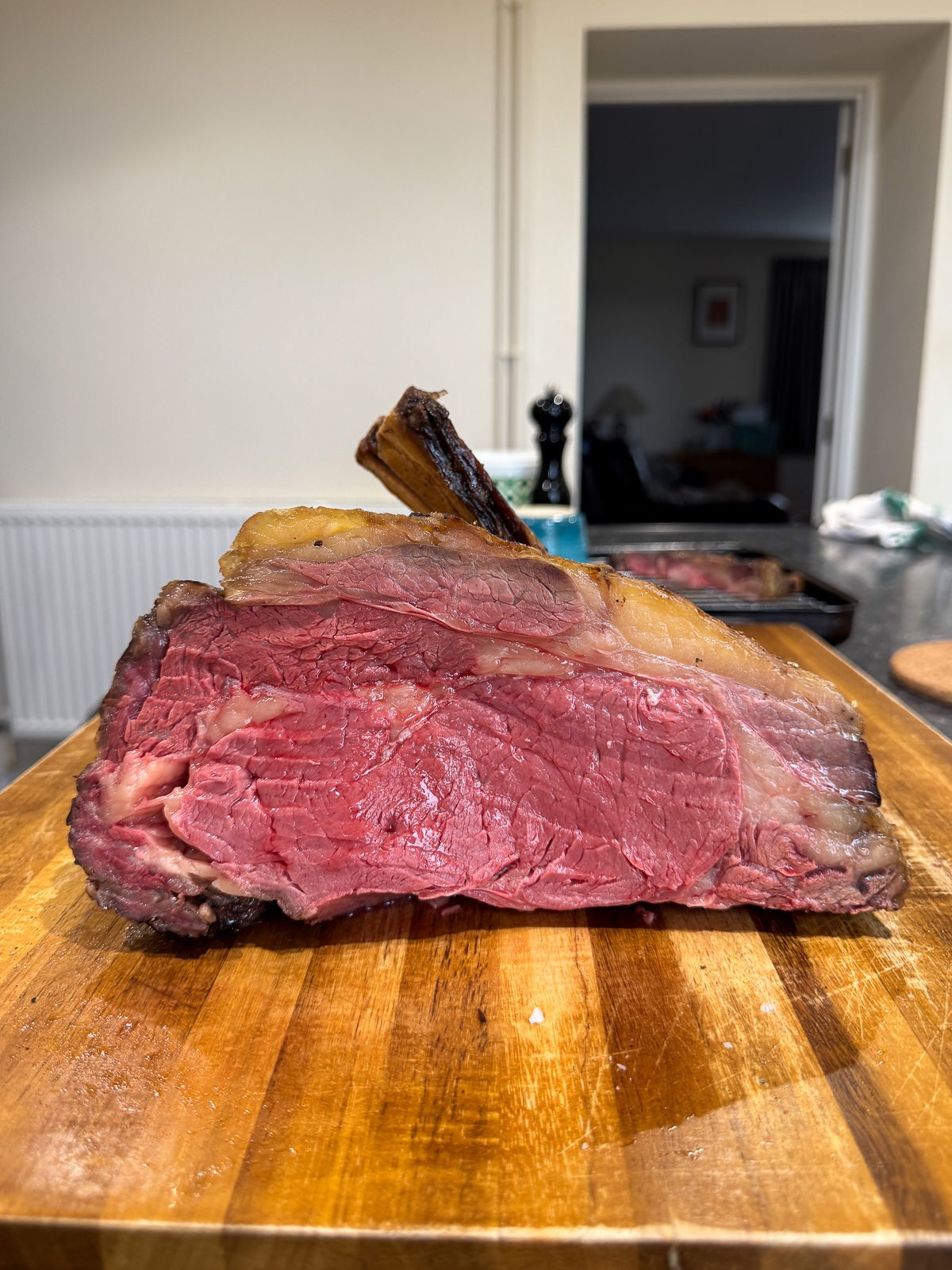
A tender, juicy roasted prime rib is a classic centrepiece dish to serve at Thanksgiving & Christmas & although it may look intimidating, it’s actually really easy to cook properly especially when you use the reverse searing method.
Prime ribs are an expensive cut of beef to buy so it’s important to cook it correctly & not mess it up! Luckily, this method & detailed step by step guide makes it really easy to cook a prime rib that’s tender, well seared & cooked to perfection. We’re also be covering what to ask your butcher for, how to trim a prime rib if necessary, the best way to carve it & what knife to use.
Some exciting news! I’ve just released my roast dinner eBook over on my brand new online store! This contains everything you need to make a restaurant style roast dinner, including perfectly roasted meats, plenty of side dishes & sauces to serve with different meats. And if you’re looking for sides to serve with your prime rib, check out our collection of side dish recipes!
What Is Reverse Searing?
Reverse searing is where you cook a piece of meat (usually a large steak or a roasting joint) at a low temperature until it reaches your desired doneness. Then it’s rested before being cooked in a scorching hot oven, to sear. It’s called the reverse sear because the meat is seared at the end of the cook, instead of the beginning.
This method of cooking meat has gained in popularity over recent years & it can be used for oven cooking, as well as barbecuing/smoking. If you’ve ever wondered how to cook roast beef that’s pink from edge to edge, this is how! Just don’t forget about carry over cooking & pull your prime rib out of the oven a few degrees lower than your desired level of doneness. Don’t worry, there’s a handy chart further down this post with a temperature guide for each level of doneness.
- Slow Roast – The meat gets cooked in a low temperature oven until it reaches the desired internal temperature.
- Resting – Once up to temperature, the meat is taken out of the oven then loosely covered with foil & left to rest for 1-1½ hours.
- Searing – The last step is to sear the meat. To do this, preheat your oven up to its’ highest setting (around 260°c/500°f) then cook the meat for 6-8 minutes until well seared. You might need to turn the meat around halfway through, so make sure to keep an eye on it!
What You’ll Need
For this recipe, you’ll need to ask your butcher for a bone in prime rib. This is sometimes called a rib of beef or a standing rib roast. I’d recommend buying a prime rib with the rib bones still attached as this adds flavour & moisture to the meat, plus it looks more impressive so it’s perfect for a Thanksgiving or Christmas centrepiece. The bones also act as a heat barrier, allowing us to gently cook the beef without overcooking it.
As we’re cooking to temperature & reverse searing our prime rib, you can use whatever size roast you like. I used a 2½ kg bone in prime rib when making this recipe, which will serve 6-8 people. But as a general guide, you should allow 1 lb (450 grams) of bone in prime rib per person. Or one bone per 2-3 people. The size of prime rib that you buy will depend on how hungry your guests are, if you’re planning on having leftovers & how many sides you’re going to making. But this is what I would use a guide.

How To Reverse Sear A Prime Rib
For the best results, you’ll need to start prepping your prime rib a day or two before cooking it. There isn’t much hands on prep here, we just need to trim the roast as necessary, season it with table salt then leave uncovered in the fridge for 1-2 days. This is called dry brining & it thoroughly seasons the meat making our cooked prime rib more tender, flavourful & juicy. Although a roasted prime rib will be good without a dry brine, it will be even better with one so I’d highly recommend doing it!
Trimming
First things first, take your prime rib out of the fridge, discard any packaging then use kitchen paper to pat the meat dry. Next, take a look at your prime rib. It should have the rib bones attached & there should be a good layer of fat on top that’s around 1 cm thick.
If necessary, we can use a sharp knife to trim the fat cap down to the desired thickness. If the chine bones/plate bone are still attached to the bottom of the prime rib, these can be removed as well, for easier carving (not the rib bones – see the photo below for what my prime rib looked like with these attached!). You will need a sharp boning knife & a butcher’s saw to do this though, so it’ll be easier to get your butcher to do this for you. Most prime ribs will already be trimmed so you probably won’t need to worry about doing it yourself!
Some people like to trim the rib cap off the top of a prime as it has a tendency to over cook & become tough. I don’t usually bother trimming it off as it adds loads of flavour to the prime rib & as we’re cooking our prime rib at such a low temperature, over cooking the rib cap is easily avoided. If you do remove it, rib cap that has been removed from a prime rib can be cooked separately like a steak or uses to make a beef sauce.
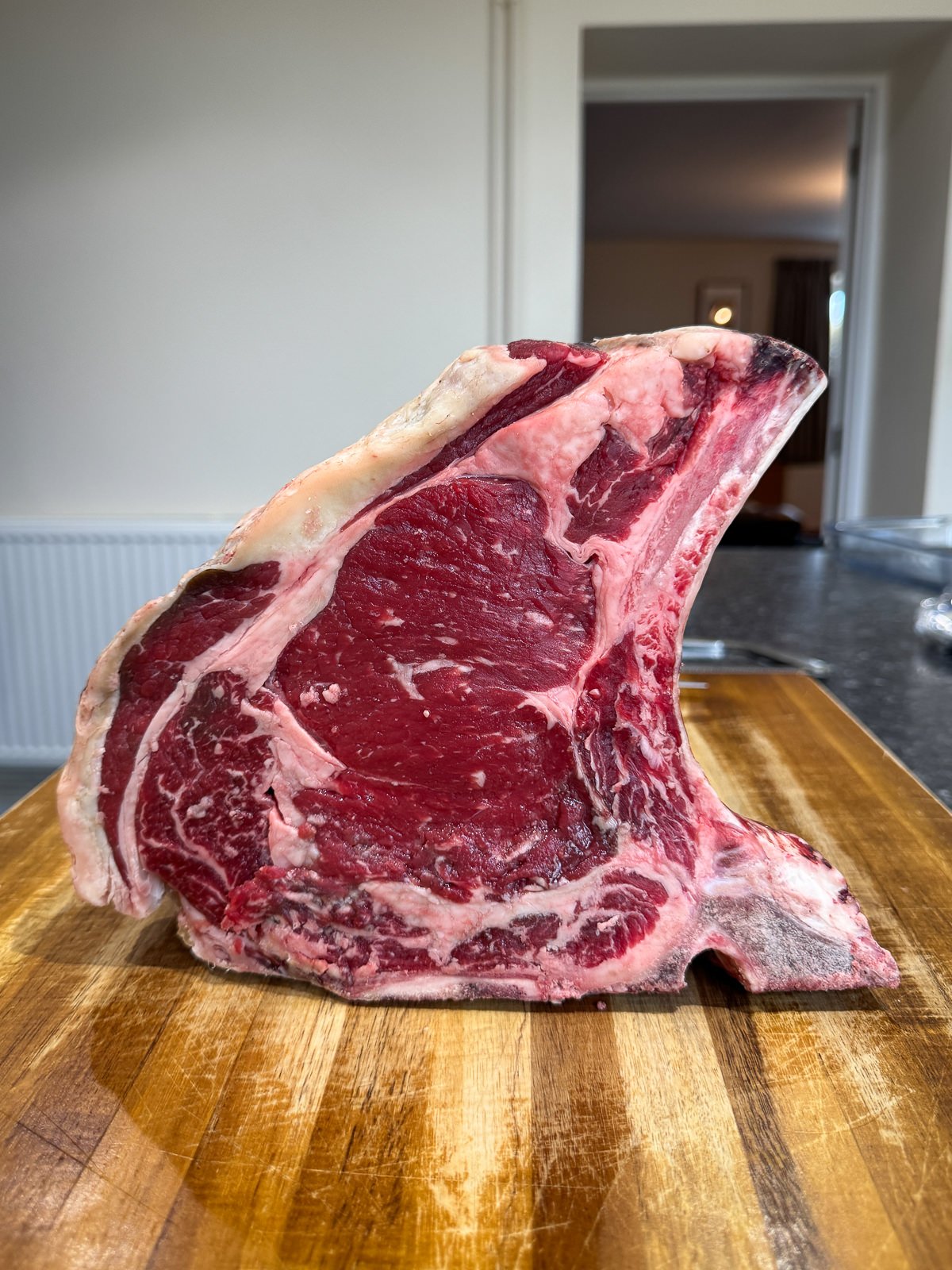
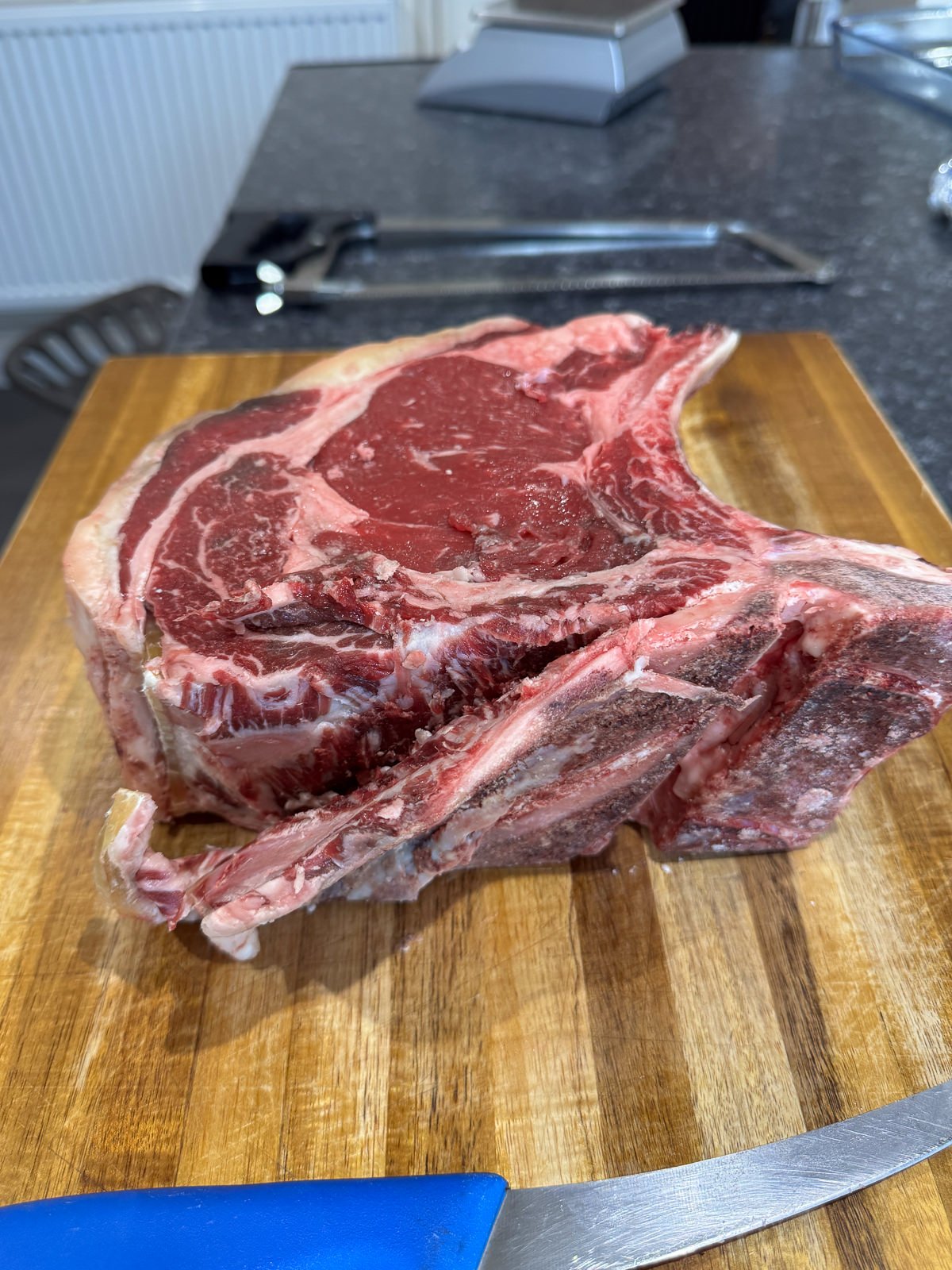

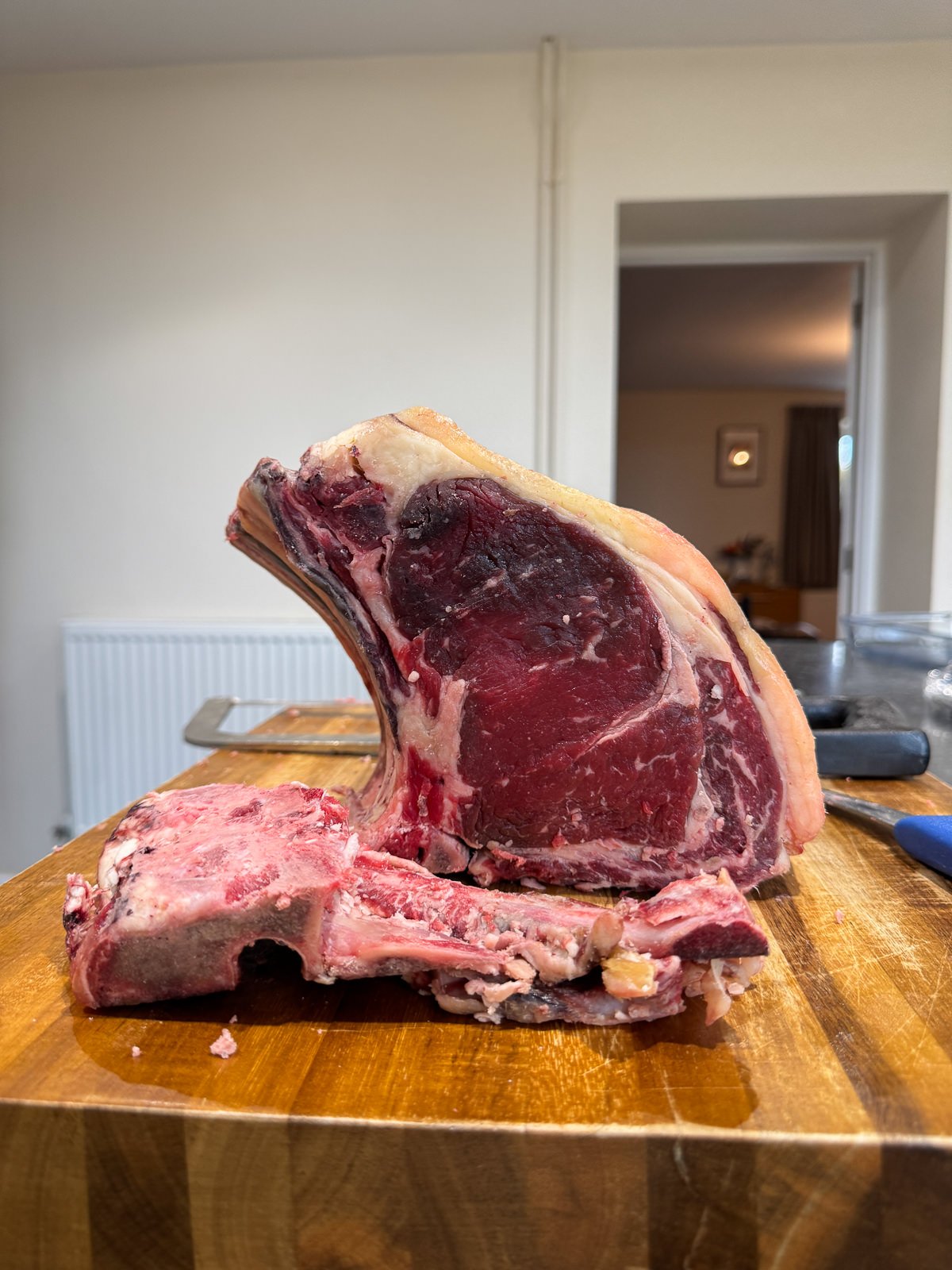
Dry Brining
To dry brine our trimmed prime rib we sprinkle table salt all over the meat, place it on a rack set on a baking tray then chill in the fridge for 24-48 hours. This draws the moisture from inside the meat to the outside. The salt dissolves in the water from the beef, creating a brine that then gets reabsorbed into the meat, seasoning it thoroughly. For dry bringing a bone in prime rib, I use half a teaspoon of table salt for every 500 grams of meat (including the bones).
Slow Roasting
Before cooking our prime rib, we need to take it out of the fridge, place it onto a rack set inside a roasting tin then let it sit at room temperature for at least an hour. This takes the chill off the meat, helping it cook more evenly! In the meantime, we can preheat our oven to 100°c/212°f. If your oven doesn’t go this low, set it to whatever it’s lowest temperature is.
The key to cooking prime rib (or any roast beef) that’s perfectly pink from edge to edge is to cook it really gently in a low temperature oven until it reaches our desired internal temperature. For a medium rare prime rib, we cook it to an internal temperature of 52°c/125°f. For a 2½ kg prime rib, this will take between 2½-3 hours.
How To Avoid Overcooking The Rib Cap
So a common issue when cooking a prime rib roast, is that the rib cap that sits on top can over cook & become tough. This is because it’s a thin section of meat that sits on the outside of the prime rib & also because it sits closest to the top of the oven as it roasts, which tends to be the hottest part. Prime ribs are pretty tall & will most likely take up of most of the space in your oven, so the best way to avoid overcooking the rib cap is to flip the whole roast over every 45 minutes or so as it slow roasts. This means that the beef will cook more evenly & we can avoid the dreaded grey band of overcooked rib cap!


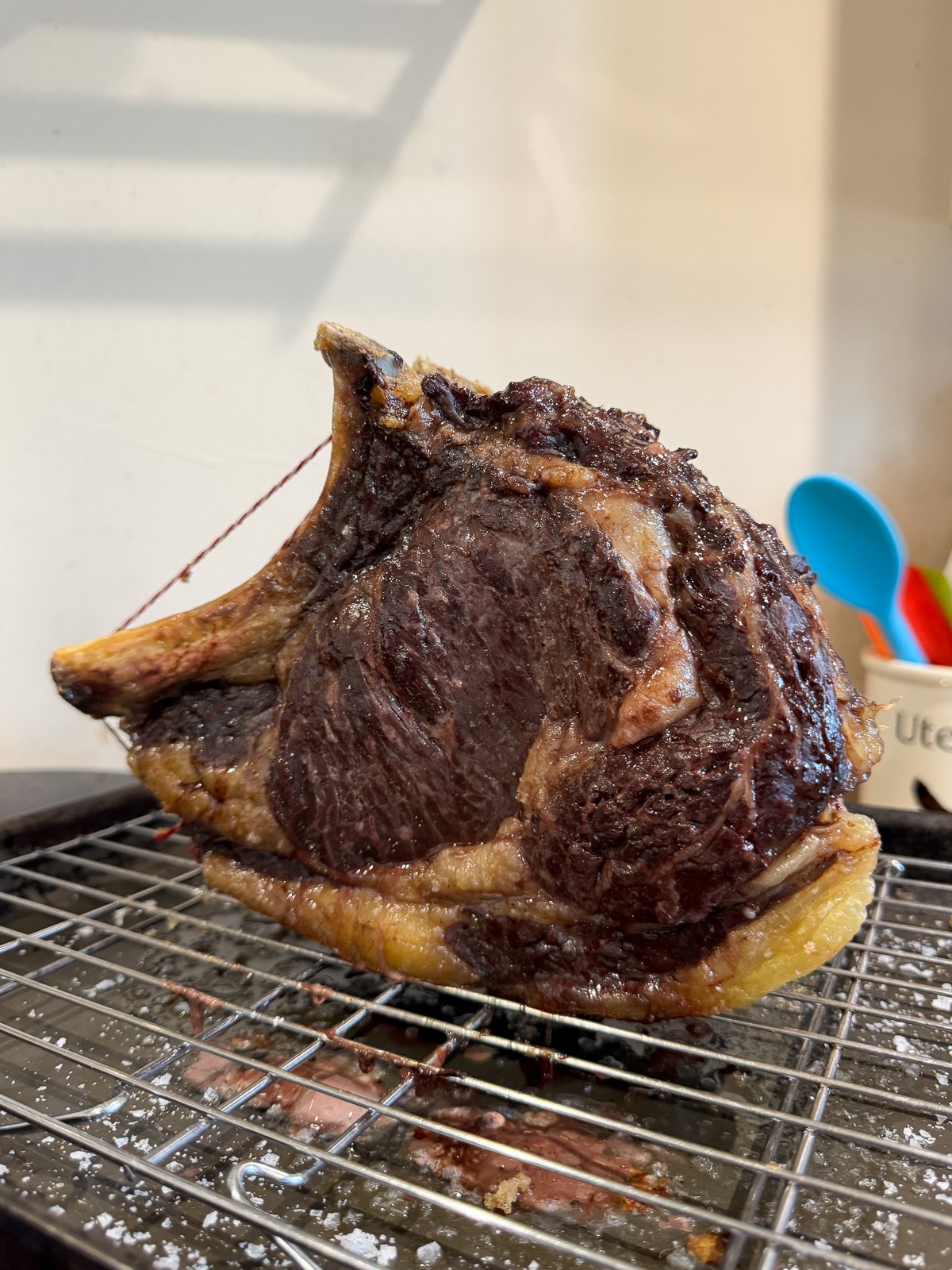
Resting
Once the beef is up to temperature, we need to let it rest before we sear & serve it. Ideally, you should let your prime rib rest for 1-1½ hours once it is cooked, loosely covered in foil so that it doesn’t go cold. Resting redistributes the juices through the meat, making it more tender & juicy, so it’s important not to skip this step.
The internal temperature of the beef will continue to rise by a couple of degrees as it rests, which is why we take it out of the oven a few degrees short of our desired final temperature. There’s a handy chart further down this post with what internal temperature to take the beef out of the oven for each level of doneness!
Searing
Once we’ve slow roasted our beef, the meat will be cooked but still quite pale on the outside. This is why this method of cooking is called the reverse sear, because we sear the meat once it is cooked. Unlike regular roast beef, where you would sear the outside first.
We’re going to be searing our prime rib in an oven, which has been preheated to its’ highest temperature. This will tend to be around 260°c/500°f. Then once the beef has rested, we pop it back into the oven & cook for another 6-8 minutes until well seared. Make sure to keep an eye on the beef as it cooks, as it might need to be turned in the oven for a more even sear.
Then once seared, it’s just a case of removing any string from the roast then carving. There’s no need to rest the beef again!

How To Carve A Bone In Prime Rib
As we’re leaving the bones attached to our prime rib, we’ll need to cut them off before we cut the beef into slices. Fortunately, this is incredibly easy to do! You take a long & thin bladed knife that’s nice & sharp and cut along the edge of the beef, where it meets the rib bones, cutting as close to the bone as possible. We cut down the bones until we reach the bottom then cut underneath them to release.
Once the bones have been removed, the easiest way to slice the prime rib is to turn it on its’ side so that the meat is facing bone side down (or the side the bones were before we cut them off!) then use a large, flat edged knife to slice it up as thick as you like. Don’t forgot to trim the meat off between the bones as well. Or chew the meat off the bone, I won’t judge!
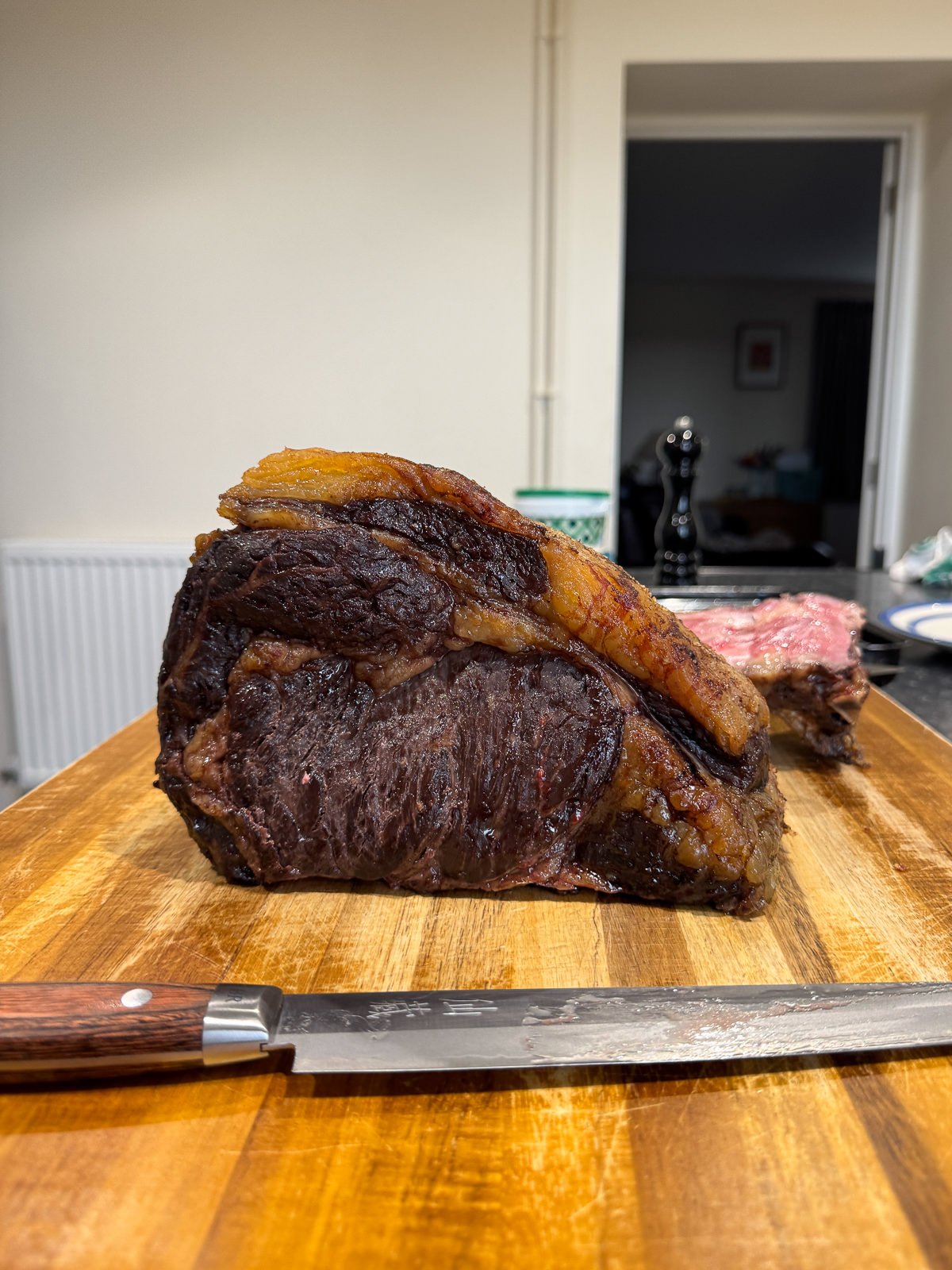
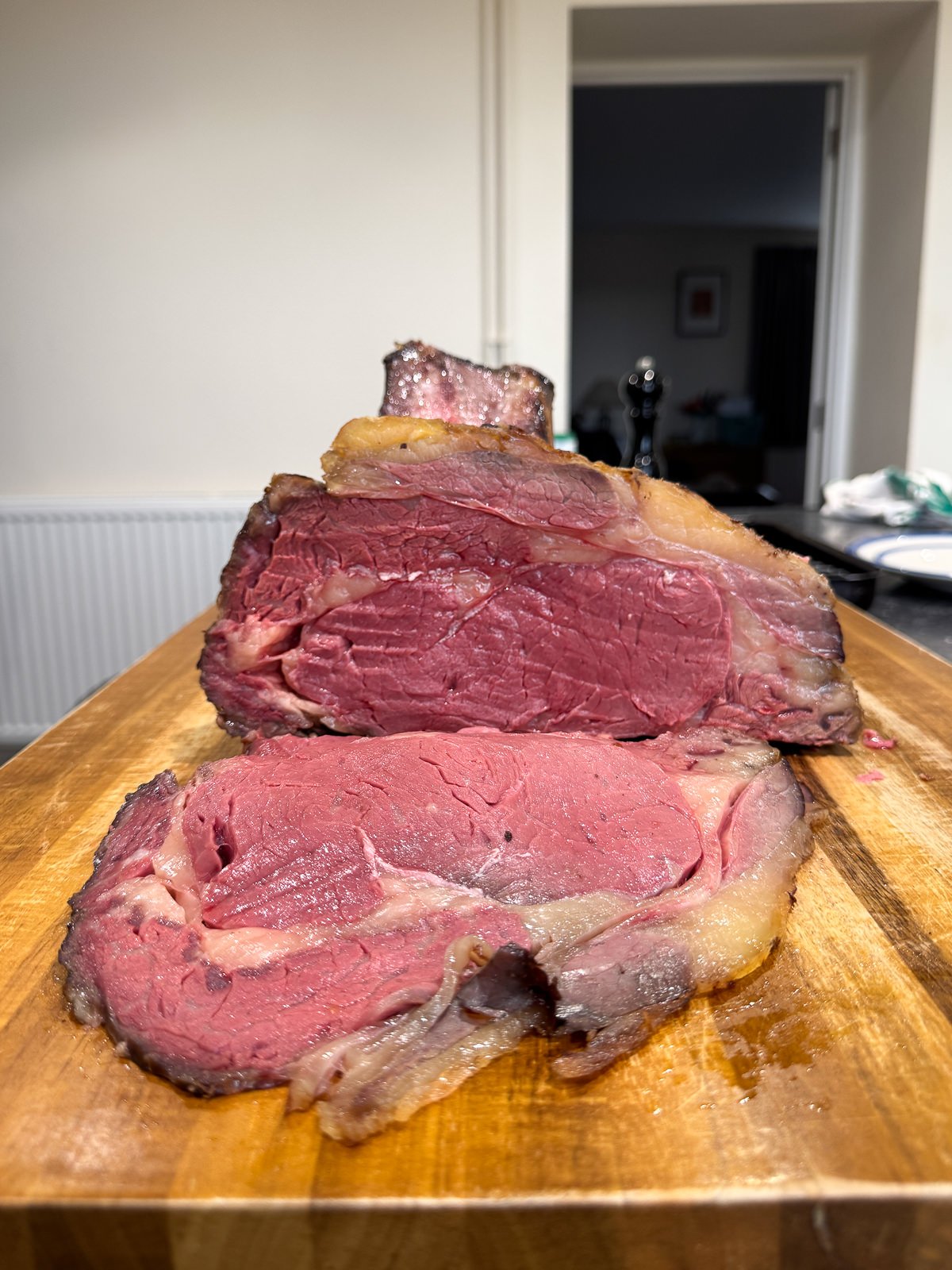
Prime Rib Internal Temperature Guide
In my opinion, prime rib is best cooked to medium rare! However, I know that everyone likes their beef cooked to different levels of doneness so I’ve included this handy chart for what internal temperature to cook your prime rib to for your preferred cooking method.
Just a quick note on prime rib doneness/cooking methods! As prime rib is full of intramuscular fat, it’s best to cook it to at least medium rare so that the fat renders properly. I’d recommend not cooking prime rib past medium, as the meat won’t be as tender as when it’s cooked medium rare or medium.
| Cooking Method | Internal Temperature (To Stop Cooking) | Internal Temperature (After Resting) |
| Rare | 46°c/115°f | 48°c/120°f |
| Medium Rare | 52°c/125°f | 54°c/130°f |
| Medium | 58°c/136°f | 60°c/140°f |
| Medium Well | 63°c/145°f | 65°c/150°f |
| Well Done | 68°c/154°f | 70°c/158°f |
Tips & Tricks For A Perfectly Cooked Prime Rib
- Ask your butcher for a prime rib that’s been dry aged for at least 28 days. Dry aged beef has the best flavour!
- Salt your prime rib then let it dry brine in the fridge for 1-2 days (24-48 hours). This makes the beef more tender, juicy & well seasoned and gives it a deeper, more flavourful crust once seared.
- Let the beef sit at room temperature for at least an hour before cooking, for a more even cook.
- Use the reverse searing technique to cook a prime rib that’s pink from edge to edge! This is where you slowly roast the beef at a low temperature then sear in a hot oven just before serving.
- Avoid overcooking your beef by using a digital food probe to check the internal temperature of the meat.
- Rest your prime rib for 1-1½ hours after roasting (before searing), to let the juices redistribute through the meat. The internal temperature of the beef will continue to rise as it rests, so we take it out of the oven a few degrees short of where we want it to be.
Serving Suggestions
A roasted prime rib is a classic dish to serve at Thanksgiving & Christmas but it can also be served as part of a Sunday roast! Leftover prime rib can be used to make sandwiches & sliders, crispy potato hashes, salads, pasta & loads more.
For Thanksgiving, prime rib tends to be served with traditional side dishes like a mashed potato casserole, creamed corn, roast potatoes, green beans, candied sweet potatoes, gravy (au jus) & dinner rolls. Whereas for Christmas, prime rib tends to be served with more classic roast dinner sides, like roast potatoes, cauliflower cheese, roasted root veg, Yorkshire pudding & Brussel sprouts.
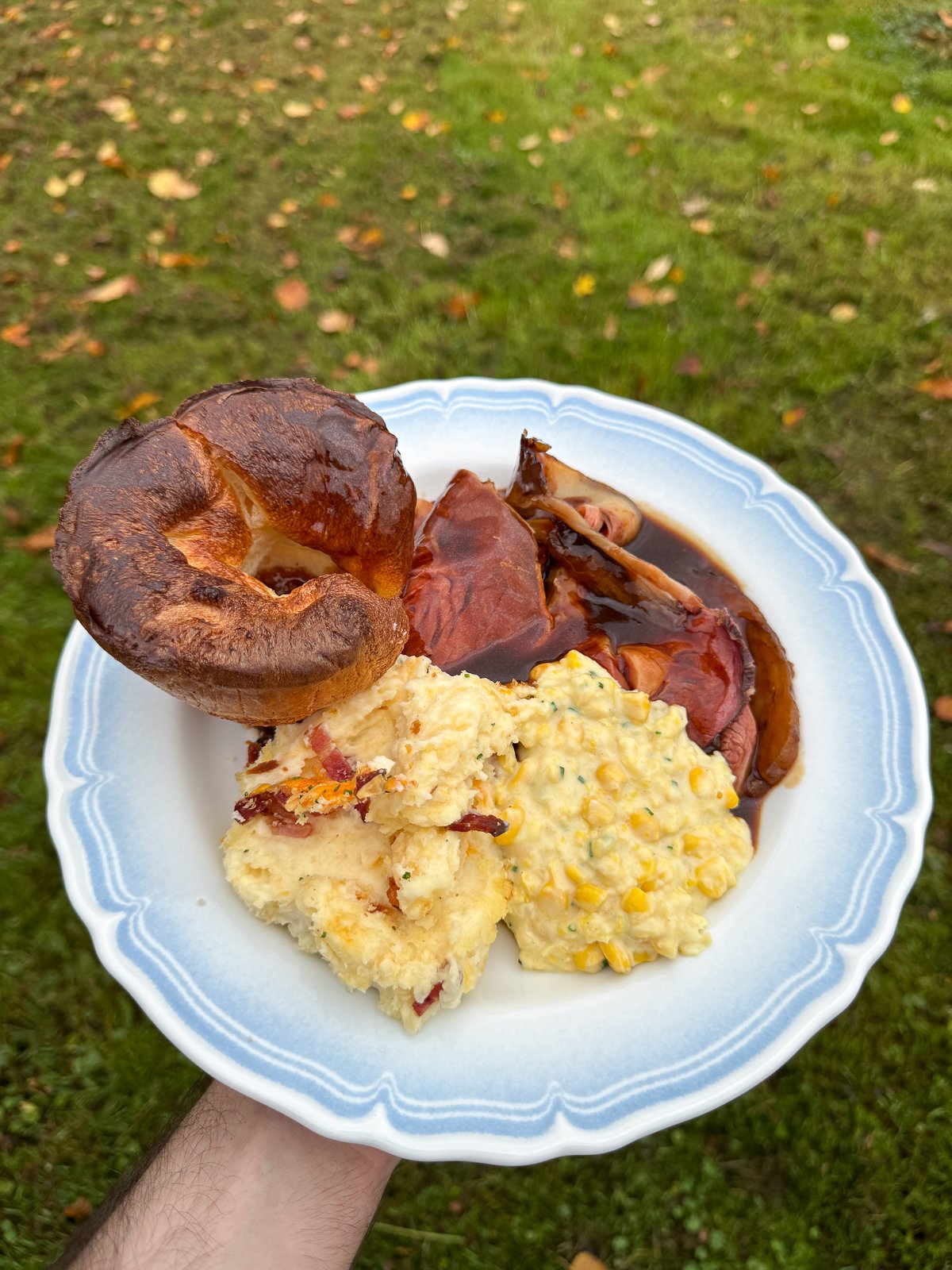
Frequently Asked Questions
Depending on what country you are in, prime rib can also be called a rib of beef or a standing rib roast.
To slow roast a prime rib in an Aga, slow roast it in the simmering oven on a grid shelf placed on the floor then sear in the roasting oven. When searing, place your roasting tray as high up in the roasting oven as possible, without the meat touching the top of the oven.
Leftover prime rib needs to be stored in the fridge & will keep for up to 3 days. You could also store leftover prime rib in the freezer where it will keep for up to 3 months. Make sure to wrap the beef so that it’s airtight, to avoid freezer burn.
Leftover prime rib is best reheated in gravy! To do this, cut your beef into slices & place into a heatproof dish with plenty of gravy. Cover the dish with foil then bake in a 180°c/356°f oven until hot. Keep in mind that the beef won’t be as pink once it has been reheated. I find that it’s best to keep leftover prime rib as a large piece then slice it to reheat. This way, the beef won’t discolour or oxidise.
For the cleanest slices, it’s best to use a long (8″-12″), straight edged carving knife to slice your roast beef. Make sure it’s super sharp! You’ll also need a pair of scissors to remove any string/twine, that was used to tie the joint up. I use a thinner blade to trim the bones off the meat then a larger knife to cut the beef into slices.
As a general guide, you should allow one bone per 2-3 people or 1 lb (450 grams) of bone in prime rib per person. For a boneless prime rib you should allow slightly smaller weight per person, around half a lb or 225g per person.
Equipment Used
Please note that these are affiliate links & I may make a small commission if you make a purchase using these links, at no extra cost to you. For more information, click here.
More Main Course Recipes To Try!
- Smoked Beef Short Rib, Guinness & Bone Marrow Pie
- Black Garlic Roasted Picanha (Beef Rump Cap)
- Tikka Masala Roast Chicken
- Roasted Garlic Lasagne (Deep Dish)
- Black Garlic Pork Belly Porchetta
- Brisket Style Smoked Pork Belly
- Slow Roasted Pork Shoulder (With Crackling!)
If you have enjoyed this prime rib recipe, it would mean a lot if you could leave a review & rating. And if you’d like to stay up to date with future recipes, follow us on Instagram & TikTok or subscribe to our newsletter!
Slow Roasted Prime Rib (Reverse Seared)
Equipment
- Roasting Tin (With A Rack)
- Digital Food Probe
- Butcher's Twine
Ingredients
- 2½ kg Bone In Prime Rib (See Notes)
- 2½ tsp Table Salt
- Fine Sea Salt
- Freshly Cracked Black Pepper
Instructions
Dry Brining The Prime Rib
- Pat your prime rib dry with kitchen paper then sprinkle the table salt all over the meat. Place the beef onto a rack set on a baking tray then chill in the fridge for 24-48 hours. Make sure to face the prime rib fat side up.
Cooking
- Take the prime rib out of the fridge, place fat side up onto a rack set inside a roasting tin then leave to sit at room temperature for at least 1 hour.
- In the meantime, preheat an oven to 100°c/80°c fan (212°f/176°f).If your oven doesn't go this low, set it as low as it will go!
- Next, pat the meat dry then generously season with freshly cracked black pepper plus extra sea salt if you like. Place into the preheated oven then slow roast until the internal temperature of the beef reaches 52°c/125°f. This will roughly take 2½-3 hours.As prime ribs tend to be quite tall, the top of the roast will probably be quite close to the top of your oven. I'd recommend flipping the beef over every 45 minutes or so, so that the rib cap doesn't over cook. This is for medium rare, which is how I think prime rib is best cooked. Feel free to cook your prime rib more/less if you'd prefer though. There's a temperature guide in the post above! As we dry brined the beef, it won't need anymore salt, unless you prefer a saltier crust.
- Once up to temperature, take the beef out of the oven, cover loosely with foil then leave to rest for 1 – 1½ hours.
- Whilst your beef is resting, turn your oven up as high as it will go. In most ovens this will be around 260°c/500°f.
- Once your beef has rested, remove the foil then cook in the preheated oven for 6-8 minutes, until well seared.
- Transfer your beef to a chopping board then remove any string. Use a sharp knife to remove the bones then cut the meat into slices, season with sea salt & freshly cracked black pepper then serve.

